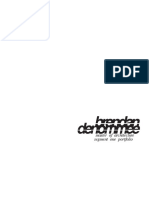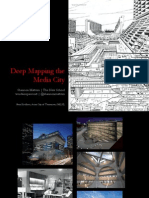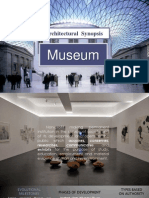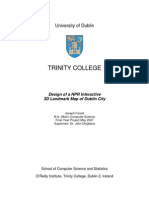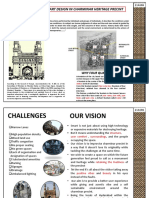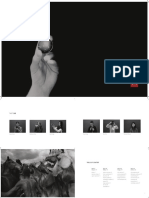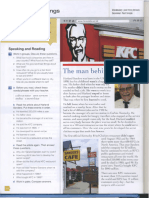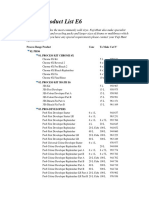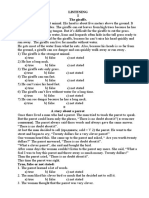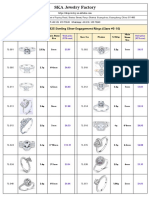HASTINGS: AN INERACTIVE HISTORY
Sandy Fang | Marina Khvan | Nancy Lee | Madison Sim
�Descri ption:
Hastings: an Interactive History is sculpture and video based
interactive artwork. A laser cut wooden board displays a 3D map of
Hastings, Vancouver upon which six model buildings sit, each with
their own significance to the cities history and accompanying video
story that plays when they individual buildings are picked up.
�Inspiration:
Hastings Street in Vancouver has
been a vibrant and dynamic
area since its founding. The
intersection of Hastings &
Hamilton is the spot where the
Vancouvers first roads were laid
and were the city was officially
founded in 1886. We were
inspired by the idea of intercity
translocation and how the
movement of city institutions and
wealth changed Hastings Street
from the glamorous city centre of
the past to what it is today.
�Ideation Process:
Our first iteration of the design involved using a large map of Hastings hanging from a wall with photos of
buildings attached to the map. These photos of buildings would each cover a sensor (either pressure or light
sensor) and when picked up, they would trigger the Arduino to set off a projector display about that particular
building. If a user picked up the picture off the Dominion Building from its place on the map, a projection on
the wall nearby would project an image of that building, starting with the oldest picture possible.
�Ideation Process:
The photo morphs and changes like a
timelapse of the building going from past to
present. The speakers in the lab will play a
synchronized audio track that plays sounds
and music/noises that match the time of the
pictures being shown. The projection of the
building will stay in the same position, but
the people and environment around them
will change, as will the audio.
The buildings we considered focusing on at
the time were the Dominion Building, Marine
Building, Carnegie Community Centre,
Harbour Centre, Oppenheimer Park (Little
Tokyo), Victory Square.
�More Ideation Process:
As we continued to ideate based on
feedback from our presentation we realised
that a three dimensional map would be
more engaging and less linear for users to
interact with, and decided to experiment
with using models of buildings, as opposed
to photographs on a map. Our choice of
building also changed as we researched
more thoroughly the history of Hastings. In
the end, we decided to model our buildings
based on the Dominion Bank Building, The
Flack Block, The Carter Cotton Building,
Victory Square, The Harbour Centre, and
The Woodwards Building due to their
historical significance to Vancouver and
their proximity within Hastings Street.
�Prototype Process:
For our prototype presentation, we small built
paper models built of cardstock and used a
painted canvas to represent the map. We had not
yet decided at the final material we would use,
but decided to experiment with card and then
acrylic as modeling materials. At this point, we
had also researched the buildings enough to write
historically accurate stories based around them.
�Prototype Process:
A teammates 89 year old grandmother,
Marion Carruthers, who has lived in
Vancouver since the 1930s, was
enlisted as our narrator and helped edit
the stories she narrated.
We also decided to include narrated
stories about these buildings within the
audio tracks of the video morphs to add
deeper meaning and context to the
display. It was also realised that a
projector was unnecessary for the
presentation of our project when we
could use a television instead.
�Prototype Process:
By our next presentation, we decided to try modeling with
acrylic to create a sturdier model of the Carter Cotton
Building with a more modern look. We had also finished a
number of the building video morphs using images primarily
from the Vancouver City Archives website. A software called
MorphAge was used to create the morphs before being
edited and having a soundtrack added in Final Cut Pro.
�FINAL ARTIFACT
https://vimeo.com/135985048
�Final Design:
The final design of our installation was
created using pressed layers of clear
acrylic for the buildings, and a large
wooden board, lasers cut with topical
details in order to look like a map of
Hastings Street. A large screen tv was
placed behind the board and invited
users in by playing a video of
Vancouver shot in 1907 on loop.
Instructions on the board ask users to
please pick up one building at a time.
11
�Final Design:
When the user picks up one of these buildings,
such as the Harbour Centre, the Vancouver
1907 video stops playing and a video morph
of the Harbour Centre transforming over time
with its accompanying story plays instead.
When that video is put down, the 1907 video
resumes until another building is picked up. This
interaction is designed for one user at a time to
participate, while others observe. The users
have freedom to choose whichever building in
whichever order they like and can watch as
much or as little of the video as they chose.
12
�13
�Resource Links:
Building Histories: https://changingvancouver.wordpress.com/
Historical Photos: http://vancouver.ca/your-government/city-of-vancouver-archives.aspx
Folley Sounds: http://www.freesound.org/
















